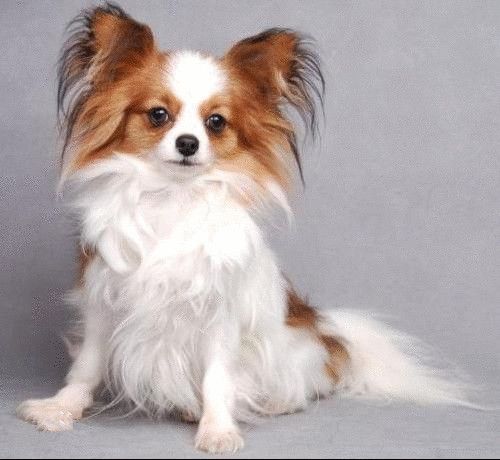Papillon
IUCN
LCBasic Information
Feature
One of the oldest dog breeds in Europe
Distribution and Habitat
Originated from France, it is now found all over the world.
Appearance
The head is short and the muzzle is pointed, of medium width. The skull is slightly arched, and the nose is round and black. The eyebrows are well angled. The nose and mouth are sharp. The ears are large, divided into vertical ears and erect ears, separated from each other, fully spread out to the side, and the base of the ears is behind the head. This appearance reminds people of the spread wings of a butterfly. The inner hair of the ears is fine and wavy, and the outer hair is rich and spike-shaped. The breed with abundant decorative hair is better. The eyes are located at a lower position on the face, of equal size, almond-shaped, round but not protruding. The eyeballs and eye sockets are dark: the body is tall, not too strong, with a medium chest and a straight back. The coat is long silky hair, most of which is smooth, and some is slightly wavy. The coat color is white with markings. The markings are not black or reddish brown, but other colors. The limbs are strong and parallel i
Details
The Papillon, also known as the Papillon or the Papillon, is named after the long upright hair on its ears, which looks like a dancing butterfly. The Papillon originated in France and is one of the oldest dog breeds in Europe.

The Papillon was called the Dwarf Hound in the 16th century. This kind of dog is often seen in precious ancient paintings or tapestries. In the Louis era, the larger dwarf hounds gradually changed from drooping ears to upright ears, with the ears tilted on both sides of the head, like two open butterfly wings, and developed into the Papillon in modern times. In the 17th century, the court of Louis XIV in France was popular with this kind of dog, and its price was very high. It was popular in the French upper class and became famous because of the favor of Marie Antoinette. The Papillon was deeply loved by Spanish and French nobles, which confirmed the status of this dog in the dog world. After a record of a Papillon being bought and sold in 1545, it began to appear in many documents.
The Papillon has a cheerful and lively personality, elegant manners, calm and obedient to the owner, is relatively smart, does not bark casually, has no body odor, and is very adaptable.
Although the Papillon is small, it has a bad temper. When walking the dog outside, it will bark and provoke some strange dogs and is prone to fighting. Friends who plan to raise one should pay attention.
Protect wild animals and stop eating game.
Maintaining ecological balance is everyone's responsibility!








